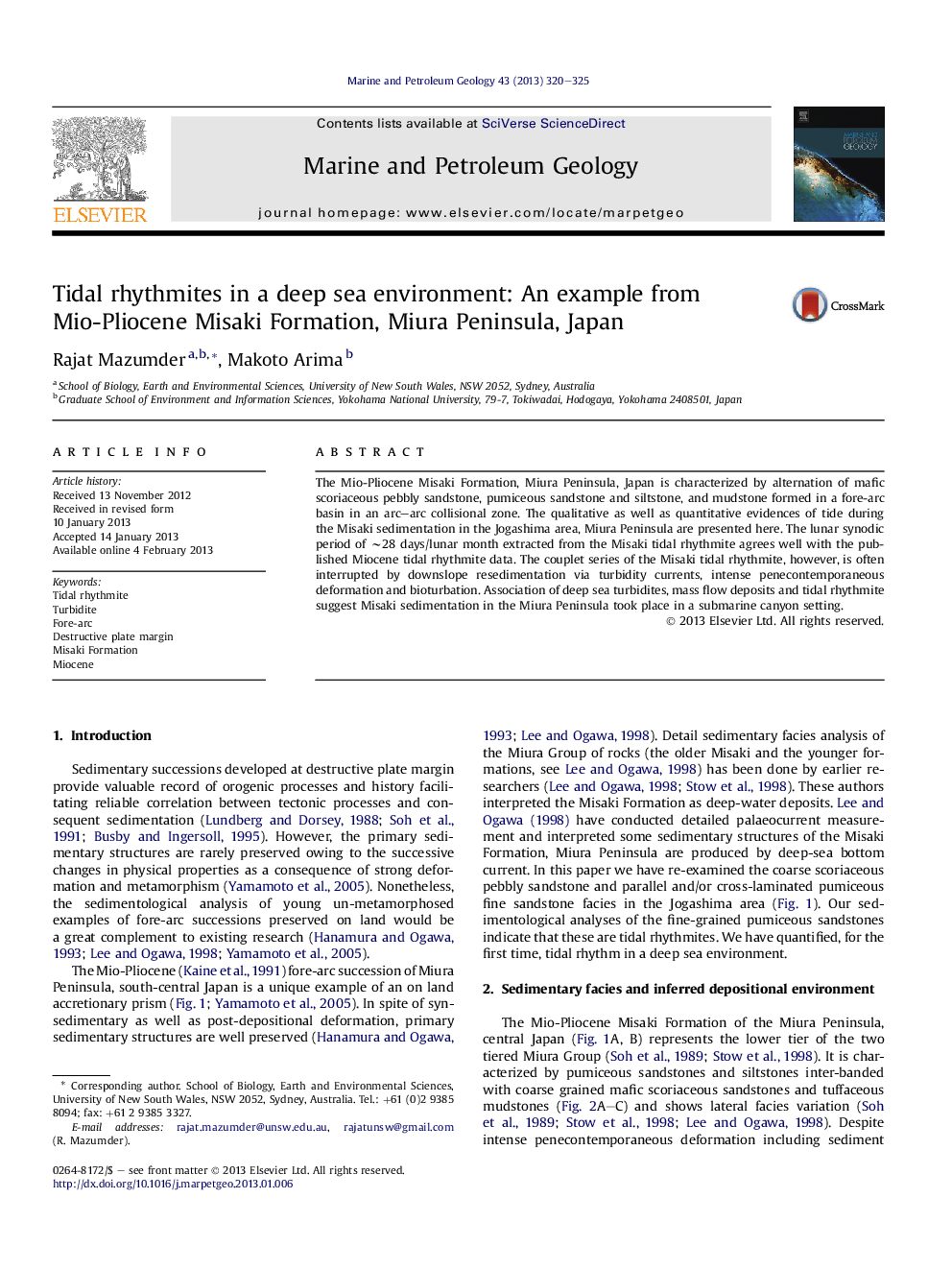| Article ID | Journal | Published Year | Pages | File Type |
|---|---|---|---|---|
| 6435544 | Marine and Petroleum Geology | 2013 | 6 Pages |
The Mio-Pliocene Misaki Formation, Miura Peninsula, Japan is characterized by alternation of mafic scoriaceous pebbly sandstone, pumiceous sandstone and siltstone, and mudstone formed in a fore-arc basin in an arc-arc collisional zone. The qualitative as well as quantitative evidences of tide during the Misaki sedimentation in the Jogashima area, Miura Peninsula are presented here. The lunar synodic period of â¼28Â days/lunar month extracted from the Misaki tidal rhythmite agrees well with the published Miocene tidal rhythmite data. The couplet series of the Misaki tidal rhythmite, however, is often interrupted by downslope resedimentation via turbidity currents, intense penecontemporaneous deformation and bioturbation. Association of deep sea turbidites, mass flow deposits and tidal rhythmite suggest Misaki sedimentation in the Miura Peninsula took place in a submarine canyon setting.
Graphical abstractDownload full-size imageHighlights⺠First quantitative documentation of tidal rhythmite from deep sea environment. ⺠First documentation of tidal rhythmite from a volcaniclastic setting. ⺠Constrain depositional setting of Misaki Formation.
